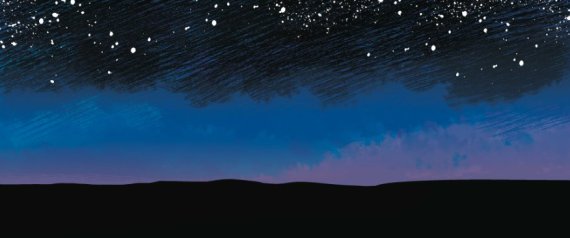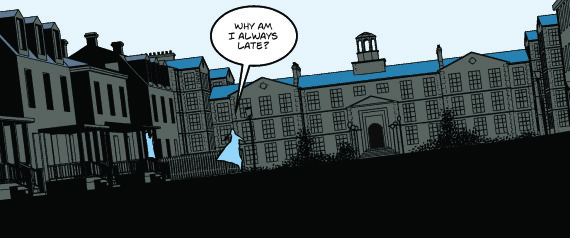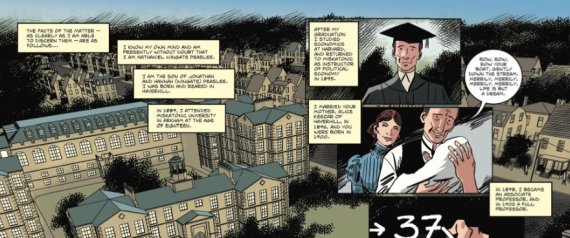I discovered Lovecraft's work in the early 80's when I was about 10 years old and I bought a roleplaying game called "The Call of Cthulhu." I didn't know what I was getting into. I hadn't heard of Lovecraft prior to that game, I wasn't aware of his influence on horror.
The game led to many visits to my local library and reading all I could get my hands on. The game was just a gateway. What I instantly fell in love with about Lovecraft's brand of horror was how the horror was just beneath the surface of every day life. If you looked close enough in the dark you'd see it. And you wouldn't just see a pair of eyes staring back at you you'd see hundreds of eyes and the shadow in the dark would be a hundred feet high and blocking out the stars. Humanity could barely scratch the surface with regard to how scary the universe really was. Our minds were just too small to take it all in.
Back in 2010, I had an opportunity to adapt a book by myself. My collaborator on a series of Sherlock Holmes adaptations, Ian Edginton, was working with another artist on an adaptation for SelfMadeHero, so I had a very tiny window of opportunity to do something and so I had discussions with my publisher, Emma Hayley about adapting "At the Mountains of Madness." I did a cover (which ended up being the final cover for the book) and a test spread and pretty much the same day I got the job. I just happened to pitch the right thing at the right time because SelfMade were secretly working on the first Lovecraft Anthology - edited and partially written by Dan Lockwood.
So "At the Mountains of Madness" was to establish a sort of precedent for all that would follow. I hadn't adapted a book entirely on my own before, I mean I'd written for television before but never taken on anything as big as a book. And pretty much since that book I've adapted and refined a process.
I begin with the source. I absorb as much of the material as I can, so I read everything I can on it, and even listen to audio versions just so the book worms its way into my head. I have to know the book back to front before I can even think about taking it apart.
I work up a detailed synopsis. I print off a text version of the entire book which is broken down into paragraph chunks and go through it with a red pen. I make a point of highlighting themes and character relationships and how someone might emotionally respond, pin pointing opportunities for dramatic conflict, things I can make a scene out of with dialogue, because quite often that's what's absent in Lovecraft books, dialogue. I strip the book down to its bare bones. And then I start to reassemble the thing.
Now, I have two rules at this point:
Rule number 1. You must stay true to the spirit of the story.
Rule number 2. You must stay true to medium to which the story is being adapted.
I didn't want to ever approach Lovecraft's work and just copy and paste his prose into my book and not leave out a single word. There's little point doing that. That's not an adaptation. That's a transcription. You don't watch a movie adaptation and have a narrator droning on for eight hours as you try to watch a film. So that's rule number two and that dictates that a lot of that lengthy prose has to go. With a visual medium like comics, much like the movies, you're going to be showing not telling. There's going to be a great deal of visual exposition because that's true to the medium, otherwise people might as well just read the original book. An adaptation is a different experience.
I think there's sometimes the perception that an adaptation, be it film or comics, is almost like the CliffNotes for a book you can't be bothered reading. A short cut if you like. And they really shouldn't be that. There should be a value to reading an adaptation and reading the original, just as there would be a value to seeing a film adaptation. My adaptations have to work as books in their own right and hopefully they do just that.
I. N. J. Culbard is the illustrator who created "The Shadow Out of Time" [Abrams, $19.95]



